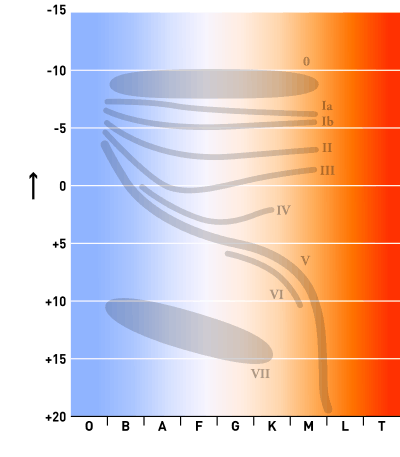Black dwarf

A black dwarf is a theoretical stellar remnant, specifically a white dwarf that has cooled sufficiently that it no longer emits significant heat or light. Because the time required for a white dwarf to reach this state is calculated to be longer than the current age of the universe (13.8 billion years), no black dwarfs are expected to exist in the universe yet, and the temperature of the coolest white dwarfs is one observational limit on the age of the universe.[1]
The name black dwarf has also been applied to substellar objects that do not have sufficient mass, less than approximately 0.08 M☉, to maintain hydrogen-burning nuclear fusion.[2][3] These objects are now generally called brown dwarfs, a term coined in the 1970s.[4][5] Black dwarfs should not be confused with black holes or neutron stars.
Formation
A white dwarf is what remains of a main-sequence star of low or medium mass (below approximately 9 to 10 solar masses (M☉)) after it has either expelled or fused all the elements for which it has sufficient temperature to fuse.[1] What is left is then a dense sphere of electron-degenerate matter that cools slowly by thermal radiation, eventually becoming a black dwarf.[6][7] If black dwarfs were to exist, they would be extremely difficult to detect, because, by definition, they would emit very little radiation. They would, however, be detectable through their gravitational influence.[8] Various white dwarfs cooled below 3900 K (M0 spectral class) have been found recently by astronomers using MDM Observatory's 2.4-meter telescope. They are estimated to be 11 to 12 billion years old.[9]
Because the far-future evolution of stars depends on physical questions which are poorly understood, such as the nature of dark matter and the possibility and rate of proton decay, it is not known precisely how long it will take white dwarfs to cool to blackness.[10], § IIIE, IVA. Barrow and Tipler estimate that it would take 1015 years for a white dwarf to cool to 5 K;[11] however, if weakly interacting massive particles exist, it is possible that interactions with these particles will keep some white dwarfs much warmer than this for approximately 1025 years.[10], § IIIE. If protons are not stable, white dwarfs will also be kept warm by energy released from proton decay. For a hypothetical proton lifetime of 1037 years, Adams and Laughlin calculate that proton decay will raise the effective surface temperature of an old one-solar-mass white dwarf to approximately 0.06 K. Although cold, this is thought to be hotter than the cosmic background radiation temperature 1037 years in the future.[10], §IVB.
Surface and atmosphere
A black dwarf would have a mainly smooth surface with very few irregularities (such as mountains) due to the star's high gravity. The surface would also be dry with no surface volatiles such as water. The atmosphere of the black dwarf would consist mainly of carbon, and would contain no clouds or weather system due to its thinness.
Future of the Sun
Once the Sun stops fusing helium in its core and ejects its layers in a planetary nebula in about 5 billion years, it will become a white dwarf and, over billions of years' time, eventually will no longer emit any light. After that, the Sun will not be visible to the equivalent of the naked human eye, removing it from optical view even if the gravitational effects are evident. The estimated time for the Sun to cool enough to become a black dwarf is about 1015 (1 quadrillion) years, though it could take much longer than this, if weakly interacting massive particles (WIMPs) exist, as described above.
See also
| Look up black dwarf in Wiktionary, the free dictionary. |
References
- 1 2 §3, Heger, A.; Fryer, C. L.; Woosley, S. E.; Langer, N.; Hartmann, D. H. (2003). "How Massive Single Stars End Their Life". Astrophysical Journal. 591 (1): 288–300. arXiv:astro-ph/0212469
 . Bibcode:2003ApJ...591..288H. doi:10.1086/375341.
. Bibcode:2003ApJ...591..288H. doi:10.1086/375341. - ↑ R. F. Jameson; M. R. Sherrington & A. R. Giles (October 1983). "A failed search for black dwarfs as companions to nearby stars". Royal Astronomical Society. 205: 39–41. Bibcode:1983MNRAS.205P..39J. doi:10.1093/mnras/205.1.39P.
- ↑ Kumar, Shiv S. (1962). "Study of Degeneracy in Very Light Stars". Astronomical Journal. 67: 579. Bibcode:1962AJ.....67S.579K. doi:10.1086/108658.
- ↑ brown dwarf, entry in The Encyclopedia of Astrobiology, Astronomy, and Spaceflight, David Darling, accessed online May 24, 2007.
- ↑ Tarter, Jill (2014), "Brown Is Not a Color: Introduction of the Term 'Brown Dwarf'", in Joergens, Viki, 50 Years of Brown Dwarfs - From Prediction to Discovery to Forefront of Research, Astrophysics and Space Science Library, 401, Springer, pp. 19–24, ISBN 978-3-319-01162-2
- ↑ Johnson, Jennifer. "Extreme Stars: White Dwarfs & Neutron Stars" (PDF). Ohio State University. Retrieved 2007-05-03.
- ↑ Richmond, Michael. "Late stages of evolution for low-mass stars". Rochester Institute of Technology. Retrieved 2006-08-04.
- ↑ Charles Alcock; Robyn A. Allsman; David Alves; Tim S. Axelrod; Andrew C. Becker; David Bennett; Kem H. Cook; Andrew J. Drake; Ken C. Freeman; Kim Griest; Matt Lehner; Stuart Marshall; Dante Minniti; Bruce Peterson; Mark Pratt; Peter Quinn; Alex Rodgers; Chris Stubbs; Will Sutherland; Austin Tomaney; Thor Vandehei; Doug L. Welch (1999). "Baryonic Dark Matter: The Results from Microlensing Surveys". In the Third Stromlo Symposium: the Galactic Halo. 165: 362. Bibcode:1999ASPC..165..362A.
- ↑ http://www.spacedaily.com/reports/12_Billion_Year_Old_White_Dwarf_Stars_Only_100_Light_Years_Away_999.html
- 1 2 3 Fred C. Adams & Gregory Laughlin. "A Dying Universe: The Long Term Fate and Evolution of Astrophysical Objects". doi:10.1103/RevModPhys.69.337.
- ↑ Table 10.2, Barrow, John D.; Tipler, Frank J. (1988). The Anthropic Cosmological Principle. Oxford University Press. ISBN 978-0-19-282147-8. LCCN 87028148.